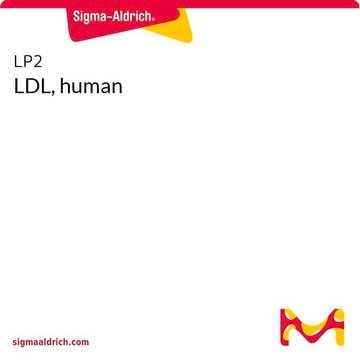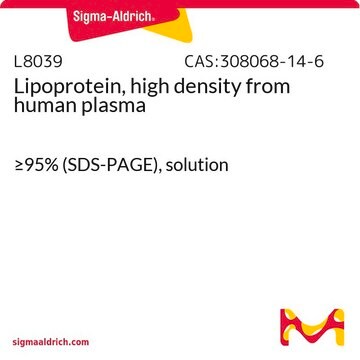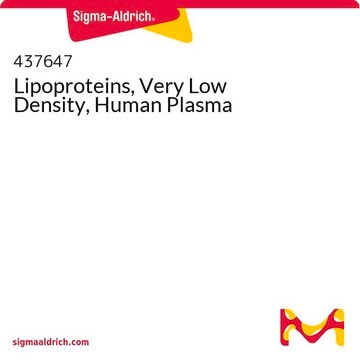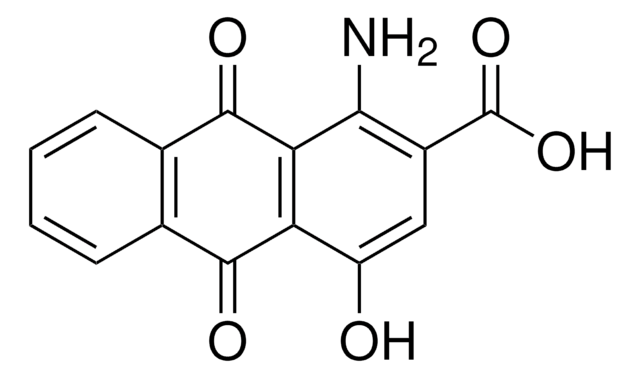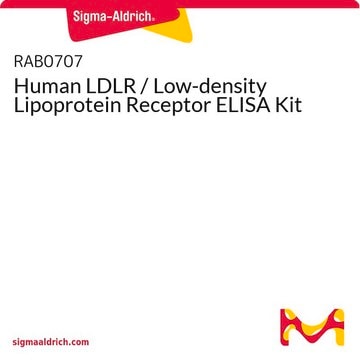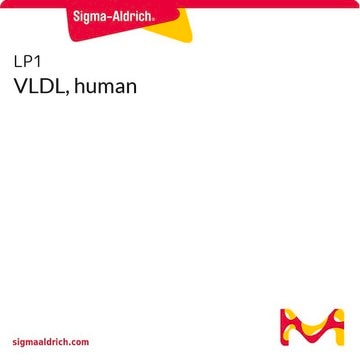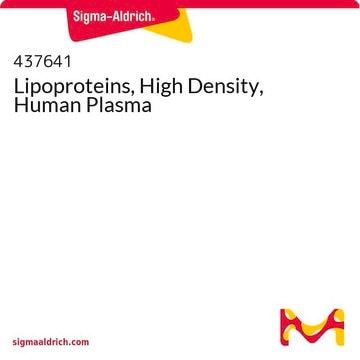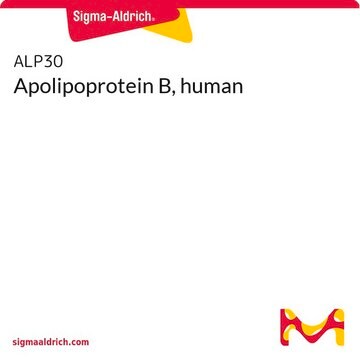SAE0053
Lipoprotein, low density from human plasma, solution
Synonym(e):
LDL, Low density lipoprotein, beta-lipoprotein
Anmeldenzur Ansicht organisationsspezifischer und vertraglich vereinbarter Preise
Alle Fotos(1)
About This Item
UNSPSC-Code:
12352202
NACRES:
NA.61
Empfohlene Produkte
Biochem./physiol. Wirkung
Low-density lipoprotein (LDL) is a lipoprotein that carries cholesterol throughout the body via blood circulation. LDL has a role in dispositioning cholesterol to tissues and organs of the body. Colloquially deemed as the "bad cholesterol", having high levels of LDL can lead to plaque formation in arteries.
LDL and HDL transport both dietary and endogenous cholesterol in the plasma. LDL is the main transporter of cholesterol and cholesteryl esters, and makes up more than half of the total lipoprotein in plasma. LDL is absorbed by the liver and other tissues via receptor mediated endocytosis. The cytoplasmic domain of the LDL receptor facilitates the formation of coated pits; receptor-rich regions of the membrane. The ligand binding domain of the receptor recognizes apo-B100 on LDL, resulting in the formation of a clathrin-coated vesicle. ATP-dependent proton pumps lower the pH inside the vesicle, resulting in dissociation of LDL from its receptor. After loss of the clathrin coat, the vesicles fuse with lysozomes, resulting in peptide and cholesteryl ester enzymatic hydrolysis. The LDL receptor can be recycled to the cell membrane. Insulin, tri-iodothyronine and dexamethasome have shown to be involved with the regulation of LDL receptor mediated uptake
LDL and HDL transport both dietary and endogenous cholesterol in the plasma. LDL is the main transporter of cholesterol and cholesteryl esters, and makes up more than half of the total lipoprotein in plasma. LDL is absorbed by the liver and other tissues via receptor mediated endocytosis. The cytoplasmic domain of the LDL receptor facilitates the formation of coated pits; receptor-rich regions of the membrane. The ligand binding domain of the receptor recognizes apo-B100 on LDL, resulting in the formation of a clathrin-coated vesicle. ATP-dependent proton pumps lower the pH inside the vesicle, resulting in dissociation of LDL from its receptor. After loss of the clathrin coat, the vesicles fuse with lysozomes, resulting in peptide and cholesteryl ester enzymatic hydrolysis. The LDL receptor can be recycled to the cell membrane. Insulin, tri-iodothyronine and dexamethasome have shown to be involved with the regulation of LDL receptor mediated uptake
Haftungsausschluss
RESEARCH USE ONLY. This product is regulated in France when intended to be used for scientific purposes, including for import and export activities (Article L 1211-1 paragraph 2 of the Public Health Code). The purchaser (i.e. enduser) is required to obtain an import authorization from the France Ministry of Research referred in the Article L1245-5-1 II. of Public Health Code. By ordering this product, you are confirming that you have obtained the proper import authorization.
Lagerklassenschlüssel
10 - Combustible liquids
WGK
WGK 3
Flammpunkt (°F)
Not applicable
Flammpunkt (°C)
Not applicable
Analysenzertifikate (COA)
Suchen Sie nach Analysenzertifikate (COA), indem Sie die Lot-/Chargennummer des Produkts eingeben. Lot- und Chargennummern sind auf dem Produktetikett hinter den Wörtern ‘Lot’ oder ‘Batch’ (Lot oder Charge) zu finden.
Besitzen Sie dieses Produkt bereits?
In der Dokumentenbibliothek finden Sie die Dokumentation zu den Produkten, die Sie kürzlich erworben haben.
Kunden haben sich ebenfalls angesehen
Unser Team von Wissenschaftlern verfügt über Erfahrung in allen Forschungsbereichen einschließlich Life Science, Materialwissenschaften, chemischer Synthese, Chromatographie, Analytik und vielen mehr..
Setzen Sie sich mit dem technischen Dienst in Verbindung.
